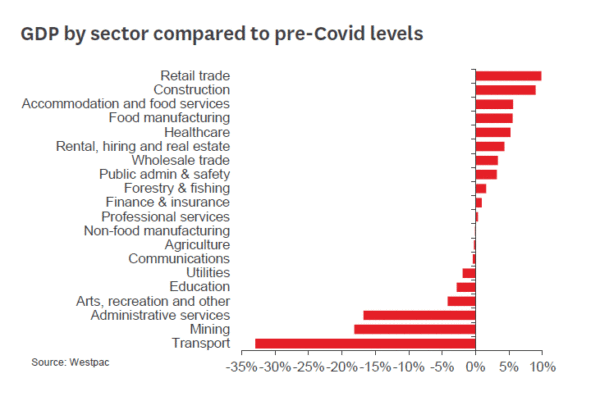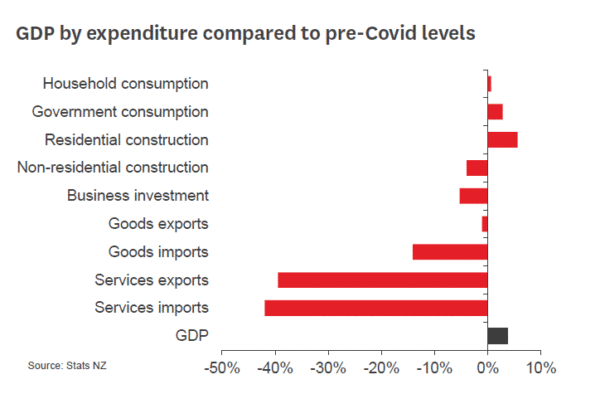- GDP rose by 14% in the September quarter, a stronger than expected rebound from the Covid-19 lockdown in the previous quarter.
- Overall activity is now slightly above pre-Covid levels, with some sectors powering ahead while others remain soft as a result of the international border closure.
- Fiscal and monetary stimulus has played an important role in getting the economy through the Covid lockdown.
- That said, the strength of the recovery does raise the question of how much further support is appropriate going forward.
Today’s GDP report confirmed what we have been saying for many months: successfully eliminating the spread of Covid-19 has allowed the New Zealand economy to rapidly swing back into action once the restrictions were lifted. The production measure of GDP rose by 14% in the September quarter, following an 11% drop in the June quarter (revised up from -12.2%).
Indeed, the rebound has been even more comprehensive than we thought. Today’s result was stronger than our forecast and, along with the earlier revisions, puts the level of GDP slightly above its pre-Covid level. That’s an extraordinary result while international travel and tourism remain almost entirely absent.
The sectors that are running particularly hot are retail and construction, both up around 9% on pre-Covid levels. It’s likely that some of this reflects catch-up activity after the lockdown ended, rather than a sustained lift. If so, it’s possible that we could even see a drop in December quarter GDP without disturbing the overall story of a strong recovery. We’ll review our forecasts with an eye to more recent indicators such as building consents and electronic card spending, which admittedly have remained perky so far.
Given the unusual nature and scale of the Covid shock, we also have to allow for the possibility of measurement errors. That’s even more likely to be the case with the expenditure measure of GDP, which has departed quite some way from the production measure: a smaller 9.5% drop in the June quarter, followed by a whopping 15.7% in September, leaving it up nearly 4% on a year ago. Domestic demand is more or less back at pre-Covid levels, but imports are significantly lower, which begs the question of how that demand is being met.
Fiscal and monetary policy have no doubt played a part in today’s result. First, measures such as the wage subsidy scheme helped businesses to ride through the lockdown earlier this year, and allowed them to quickly get back on track once the lockdown ended. Secondly, both fiscal and monetary stimulus have supported household incomes and spending, which in turn has helped to supercharge some sectors to make up for the travel-related softness in other areas.
The strength of the economy’s rebound does raise questions around how much stimulus is appropriate going forward. Indeed, we’ve already seen in yesterday’s Half-Year Economic and Fiscal Update that the Treasury has revised down its assumption of how much of the $62bn Covid response fund ends up being spent.
For the Reserve Bank’s part, it’s not so clear-cut. Its bottom line is whether inflation is on track to meet its mandated target, and stimulating the economy is a means to an end. A stronger performing economy on its own suggests higher inflation than otherwise. But our forecasts still suggest that the RBNZ will still struggle to bring inflation up to target over the next couple of years. Recent good news on the economic front has also led to a sharp rise in the New Zealand dollar, which depresses imported inflation.

















